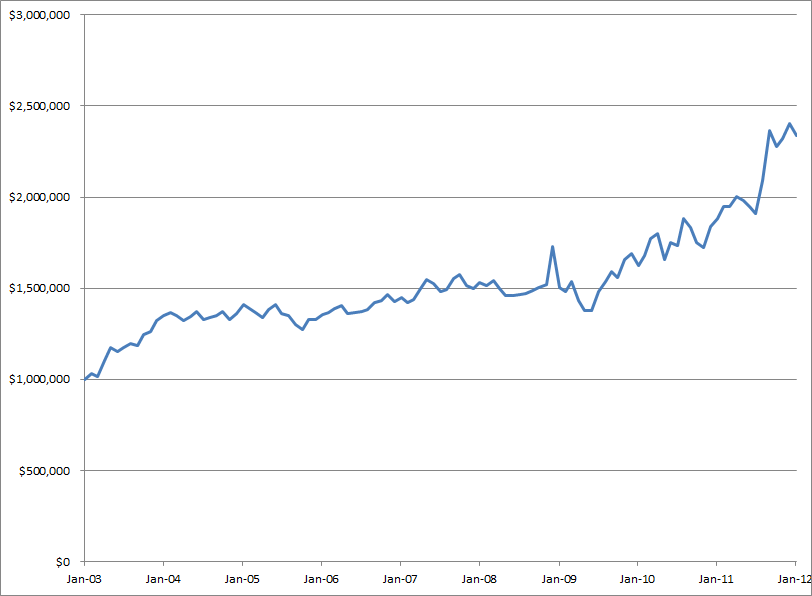After reading my "ETF Asset Management System", some people asked me about how to apply the system to their 401(k) plans.
Most retirement accounts such as 401(k) plans or IRA accounts can only hold 3 of the 5 major assets: cash, long-term Treasury bonds, and stocks. Therefore, I have modified the ETF Asset Management System especially for retirement accounts.
At the beginning of every month, I calculate the value of the propriatary "Investment Value Index" for each of the following 3 major asset classes represented by their respective ETFs: cash (SHY), long-term Treasury bonds (TLT), and stocks (SPY). Then I allocate 100% of the capital to the ETF or mutual fund with the highest value of the "Investment Value Index".
For example, suppose at the beginning of February 2012, the asset with the highest value of the "Investment Value Index" is cash, I would allocate 100% of the capital to SHY or a money market mutual fund. If at the beginning of March 2012, the asset with the highest value of the "Investment Value Index" changes to long-term Treasury bonds, I would exchange SHY (or a money market mutual fund) to TLT (or a mutual fund holding long-term Treasury bonds).
The equity growth curve from January 2003 to December 2011 is as follows:
A few parameters of the ETF Investment System For 401(k) Plans are:
Investment vehicles: ETFs of 3 major asset classes (SHY, TLT, and SPY)
Annualized return: 10% (from January 2003 to December 2011)
Numbers of trades: 26 times in 9 years (average 2.9 trades per year)
The profit/loss profile of the completed trades is as follows:
Among the 26 trades, 21 were profitable, 5 were losses. The average profit per trade was +5.5%, the average loss per trade was -4.7%. The highest profitable trade was +22.6%, the largest loss trade was -9.3%.
In summary, the ETF Investment System For 401(k) Plans holds only one of the three assets (cash, bonds, and stocks) at any time. It is simple, easy to follow, and trades fewer than 3 times per year on average. Above all, it fulfills the ultimate winning investment principle of "cut losses short, let profits run".
=========
My investment blogs:
http://blog.wenxuecity.com/myindex.php?blogID=48731
http://murmuronhudson.blogspot.com/


No comments:
Post a Comment